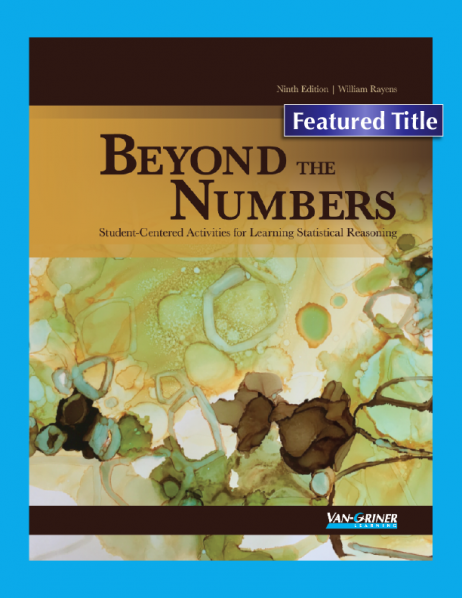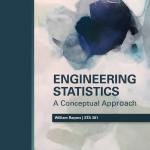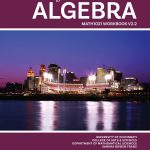
Beyond the Numbers A Student-Centered Approach for Learning Statistical Reasoning
$71.06
9th Edition | Dr. William Rayens
- Description
- Table of Contents
- Author Bio
- Instructor Tools
- Features
Description
Statistics educators have long known that ordinary statistical concepts can be extraordinarily hard for students to grasp. They are often abstract, and at their core, mathematically complex, and they can be really hard to understand without the benefit of practical encounters. This workbook is intended to facilitate those kinds of encounters through the use of hands-on activities, projects, and real-world media clips. As such, it is appropriate for many different kinds of classrooms, either as the primary resource in an inverted classroom, or a secondary resource in a more traditional classroom. At the University of Kentucky this workbook is required for STA 210, a concepts-based course designed to develop your expertise at consuming the kinds of inferential arguments encountered, or constructed, as part of our daily lives. The course is taught in a “student-centered” style, with traditional content expected to be completed outside of class. Class time is delegated to project, discussion, and discovery exercises. This content is available both as Read All About sections in the book and as videos that are freely available on the book website.
- Number Sense: Basic Numeracy
- Number Sense: Basic Computational Skills and Benchmarks
- Statistical Experiments and the Problem of Confounding
- Sampling: Purpose and Challenges
- Confidence Intervals: What They Are and How We Use Them
- Confidence Intervals: Where They Come From
- Sampling: When Probability Isn’t Enough
- The Language of Decision Making
- Hypothesis Testing: Concepts and Consumption
- Hypothesis Testing: Computations
- Hypothesis Testing: Importance of Clinical Significance
- More Than One Variable: Association and Correlation
- Association and Causation: More Than Meets the Eye
Detailed Table of Contents available here.
Dr. William Rayens is Professor and the Dr. Bing Zhang Endowed Department Chair in the Dr. Bing Shang Department of Statistics at the University of Kentucky. Rayens has an extensive research record focused primarily on the development of multivariate and multi-way statistical methodologies mostly related to problems in chemistry and the neurosciences. He served as Assistant Provost for General Education during which time he was tasked with implementing new general education reforms.
In addition to his commitment to education, Rayens is an avid distance runner and favors the classic American rock band, The Eagles.
Beyond the Numbers comes with its own website, www.statconcepts.com.
The site includes:
- Book Overview
- Student Resources
- Datasets
- PowerPoints
- Teacher Resources
- Answer Keys
- Author updates
- Canvas quizzes
- Spark a discussion
This text is noteworthy in two ways:
- This text is unambiguously focused on statistical reasoning. Our goal is to help students competently consume statistical ideas that meet them where they live—both academically and personally. If you measure worth by the number of computations performed within this text, then it might seem light. If you measure worth based on the weight of the statistical reasoning that the chosen methods surface, then the book is heavy, indeed. Computations and exposure to different methods are still valued since they surely increase students’ life skills. But we have been careful not to allow students to be distracted by unnecessary computations since it has been our experience that they often find those easier to grasp than the more important understanding of what is gained from such computations.
- This text is designed to shift the primary responsibility of learning to the student.Borrowing the words of STEM (science, technology, engineering, and mathematics) educator Robert Talbert, the goal of this shift is to change the mindset of the student from a “renter” to an “owner.” In a classroom of renters, fees are paid and the management is expected to deliver. In a classroom of owners, however, students realize that it is their responsibility to engage, absorb, and retain. The instructor’s difficult, but important, job is to prepare an environment in which that can happen. This book, mostly through how its exercises are structured, is designed to help facilitate students’ transition from renters to owners. While the content is carefully constructed to prepare students to do the accompanying exercises, they will be asked repeatedly to read, comprehend, and assimilate in order to complete them.
Changes to this edition
- The layout has moved from modules to more traditional chapter approach making it easier for both instructors and students.
- New student-centered exercises. Every chapter has at least two projects activities as well, and two different capstones projects emerge one step at a different as different chapters are covered.
- More relevant, engaging examples. These examples are part of the essence of the book, relatable student day-to-day encounters that are designed to draw the students into the material.



